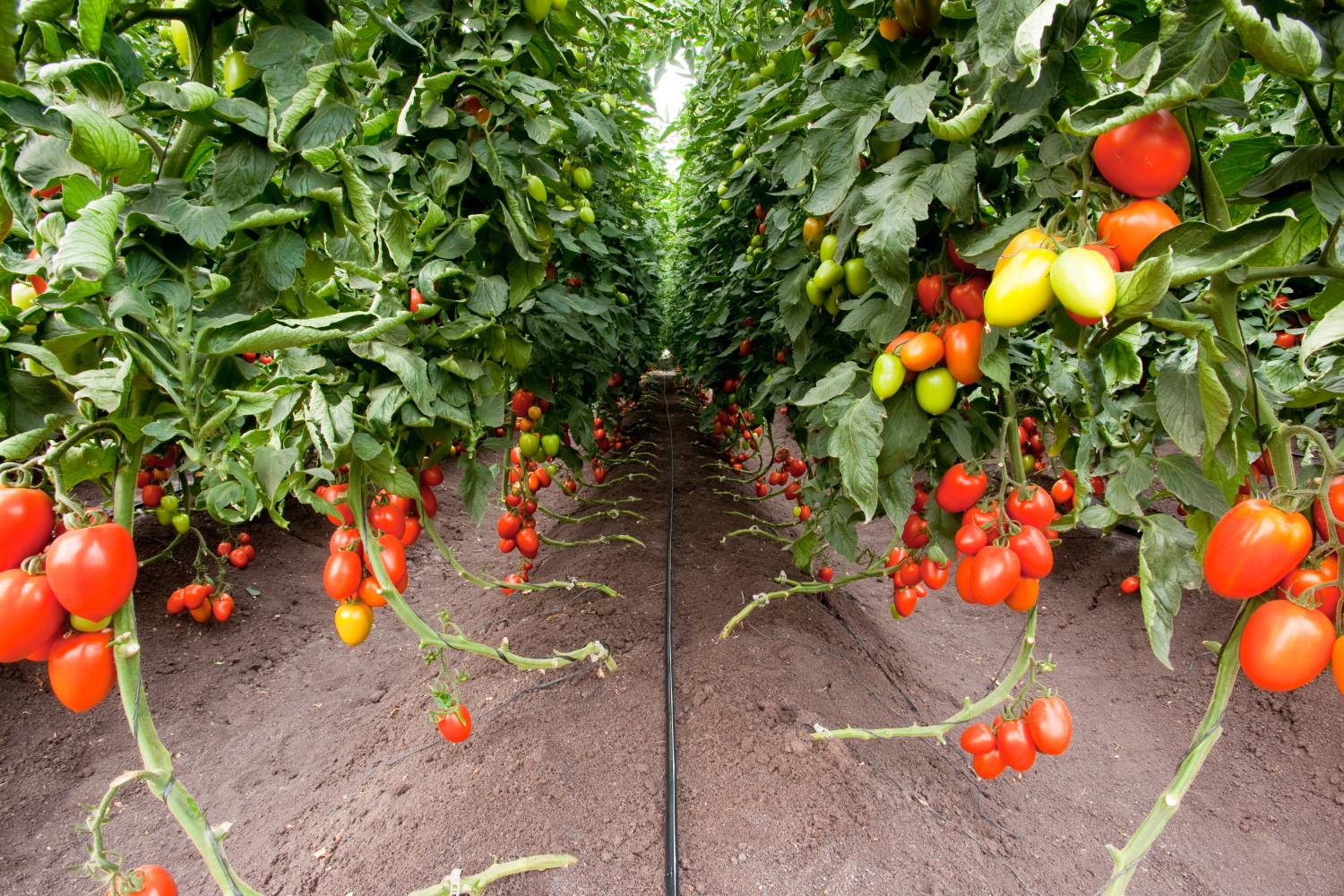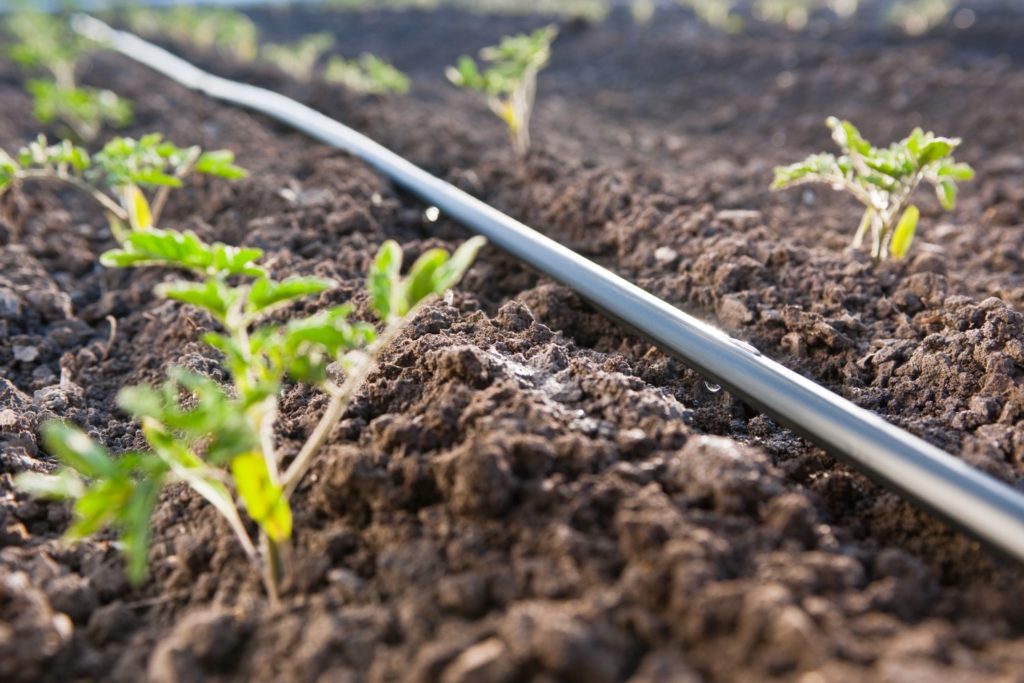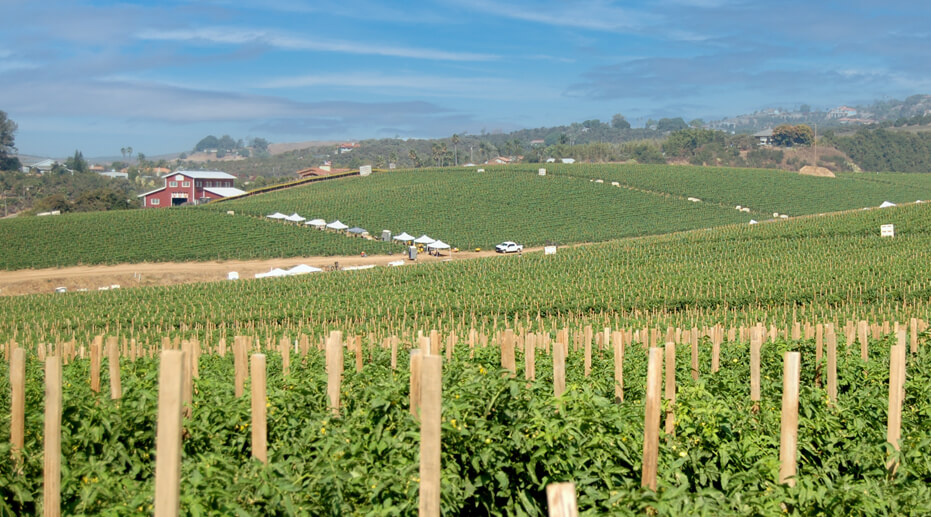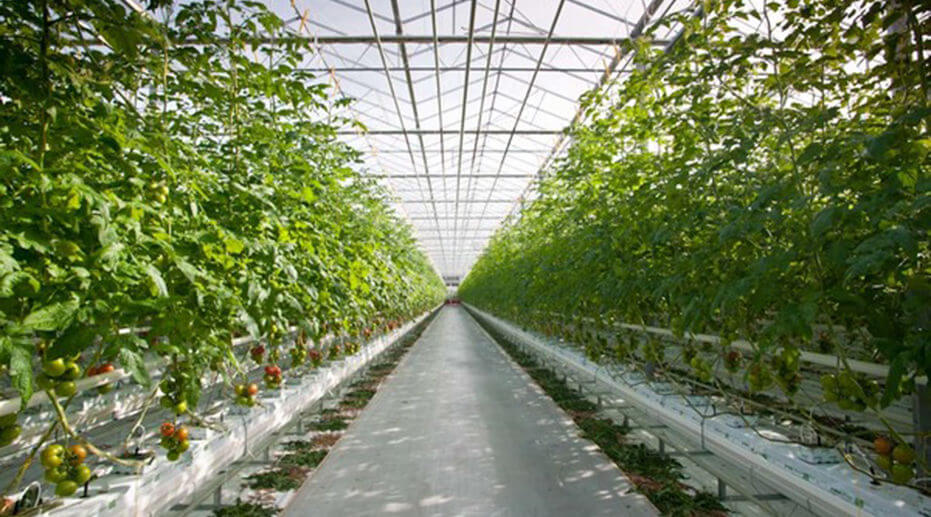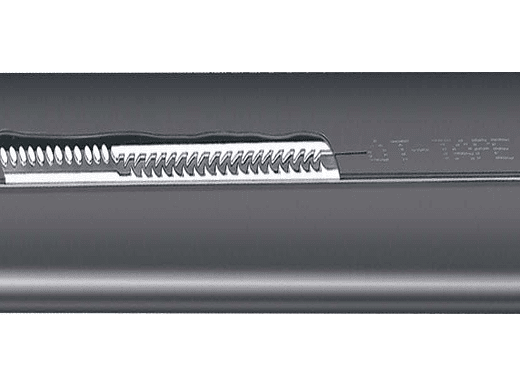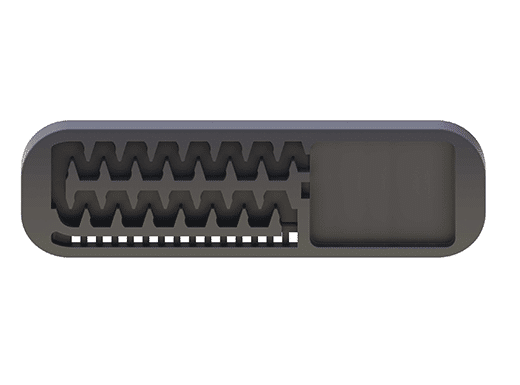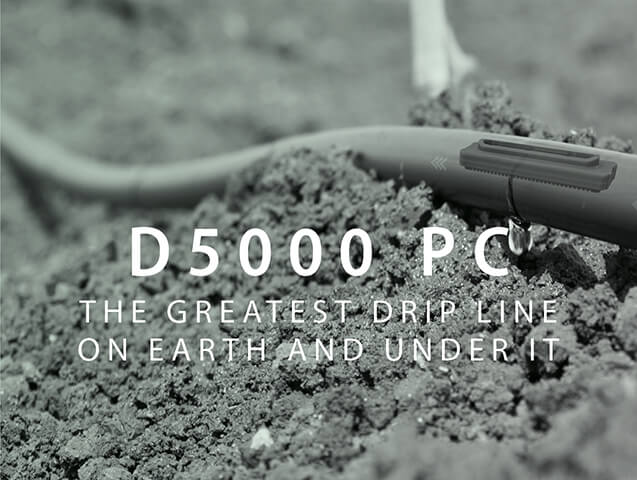

Tomato irrigation
Tomato cultivation is a delicate process that requires precise irrigation to ensure healthy growth and maximum yields. Choosing the right irrigation method and adhering to best practices are crucial for successful tomato production. In this article, we will discuss various tomato irrigation methods, focusing on the advantages of drip irrigation and the benefits of using Rivulis drip irrigation systems. We will also provide insights into best practices for tomato plant irrigation.
Tomato irrigation methods
Furrow irrigation
This is a traditional method involving small channels or furrows between rows of tomato plants, allowing water to flow through and reach the root zone. While inexpensive, furrow irrigation can lead to water wastage due to evaporation and runoff. As in many other cases, furrow irrigation has a lot of disadvantages compared to other methods of irrigation.
Besides being inefficient in water use, it also presents some challenges such as water logging and sub-optimal conditions, both before and after irrigation application.
Water and nutrient leaching are also some of the major drawbacks of this irrigation method.
Sprinkler irrigation
Water is distributed through a network of pipes and sprinklers, often via center pivot / lateral move irrigation, providing even coverage across the field. Sprinkler irrigation can be more efficient than furrow irrigation but may increase the risk of foliage diseases due to wet leaves. Despite its better water distribution uniformity, sprinkler irrigation inevitably waters the whole field, regardless of the plant rows themselves or the relevant root zone. Tomatoes are sensitive to foliage wetting, and the inferior accuracy of sprinklers makes them a less than perfect choice for your tomato crop.
Drip irrigation
The most efficient and effective method for watering tomato plants is drip irrigation, which delivers water directly to the root zone, minimizing water wastage and promoting healthy plant growth. It provides water and nutrients on demand. With minimum waste and maximum accuracy, the best results can be achieved and return on investment is best assured.
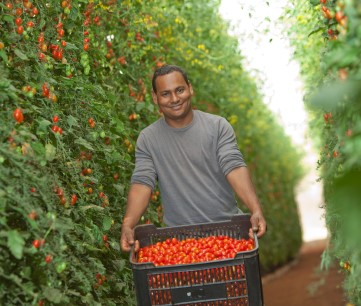
Advantages of drip irrigation for tomatoes
Drip irrigation has emerged as one of the most efficient methods for irrigating tomatoes. It offers numerous benefits, contributing to higher yields and more sustainable production. Let’s drill down on some of the major benefits of drip irrigation for tomatoes.
Water conservation
Drip irrigation systems can save up to 50 per cent more water than traditional irrigation methods such as furrow, making it an environmentally friendly option. With low flow rate emitters, water is applied according to plants’ needs, and exactly where it is needed. Without unintentional wetting of the area between the rows and without water logging or leaching, the plant’s environment is brought closer to optimum.
Improved yields
Studies have shown that drip irrigation can increase tomato yield by 20–90 per cent, depending on the region and growing conditions. With an improved water-to-air ratio in the soil and a much more precise application of water and fertilizers, the crop can more easily reach its genetic yield potential.
The study above shows that with drip irrigation, tomato yield was 48% higher with drip irrigation.
Mitchell, Shrestha, Klonsky, Turini, Hembree. Overhead and Drip Irrigation System Effects on Tomato Growth and Yield in California’s Central Valley. American Society for Horticultural Science. (2014).
Reduced disease and pest pressure
Tomatoes, along with many crops in the Solanaceae family, are extremely sensitive to leaf disease.
Moisture on the canopy from overhead sprinkler irrigation can lead to disease which will cost you in yield and quality. Drip irrigation delivers the right amount of water to the root of the plant, preventing water from gathering on the leaves.
By delivering water directly to the root zone, drip irrigation reduces the chances of foliage diseases and pest infestations associated with excess moisture on the leaves.
Fertilizer efficiency
Drip irrigation allows for the precise application of fertilizers, ensuring that nutrients are delivered directly to the root zone, resulting in better nutrient uptake and reduced fertilizer wastage.
Rivulis drip irrigation systems for tomatoes
Rivulis is a leading provider of drip irrigation solutions, offering a wide range of products designed to meet the specific needs of tomato growers all over the world. Our tomato irrigation systems provide numerous advantages, including:
- High-quality drip lines: Rivulis drip lines are designed to provide uniform water distribution, ensuring that all tomato plants receive the same amount of water and nutrients.
- Advanced filtration systems: Rivulis offers advanced filtration systems that prevent clogging and ensure the longevity of the irrigation system.
- Easy installation and maintenance: Rivulis systems are designed for easy installation and maintenance, allowing growers to focus on other aspects of tomato growing.
- Customized solutions: Rivulis offers customized solutions designed for the specific needs of different tomato varieties and growing conditions.
Best practice for tomato irrigation
To ensure successful tomato growing, it is essential to follow best practices for irrigation and fertigation, such as:
- Monitoring soil moisture: Regularly check the soil moisture levels to determine the appropriate watering frequency and duration.
- Maintaining uniform water distribution: Ensure that your irrigation system provides uniform water distribution across the field.
- Fertilizer application: Utilize fertigation (applying fertilizers through the irrigation system) for efficient nutrient delivery directly to the root zone.
- Regular maintenance: Regularly check and maintain your irrigation system to ensure optimal performance.

What tomato growers are saying about Rivulis
Irrigation solutions for tomato plants
Frequently asked questions about tomato production
Each region has a specific set of environmental conditions that will determine the daily water requirements of the crop. Knowing and following these factors is critical. Furthermore, each tomato variety and each phonological stage has different water requirements. Temperature, radiation, wind, soil type and more must all be considered. Rivulis offers Manna Irrigation to help take the guess work of determining how much to irrigate, and when.
There are 3 drip irrigation systems for in-field processed tomato growing:
– Single season on surface. A thin (6 to 8 mil) drip line or tape is used for one season. At the conclusion of each season, the drip line/tape is retrieved for recycling. The benefits are easy installation, less maintenance and more economical.
– Retrievable multi-season on surface. A heavier thickness drip line (minimum 30 mil) is installed on surface, which is retrieved and stored at the end of each season for re-use. Provides multiple years of use from the same drip line.
– Subsurface drip irrigation. In this application, the drip line/tape is installed 20 – 30 cm below the ground for multi-season use. This helps keep the surface dry to help reduce humidity and disease.
Besides following specific instructions from a professional or a guide, there are specific plant symptoms that allow you to detect water stress within your field or plot. Nevertheless, as in many cases, once these symptoms start to show, your crop might have already suffered to the extent of yield reduction.

Any information provided herein, including any case study referrals are for information purposes only and actual results may vary.
Whilst every effort has been made to ensure all data is accurate, the accuracy of all data cannot be guaranteed and it is advised that you to consult with an irrigation specialist for your specific needs and to carefully review technical specifications for proper use.
As some products are not available in all regions, please contact your local authorized dealer for additional details.


